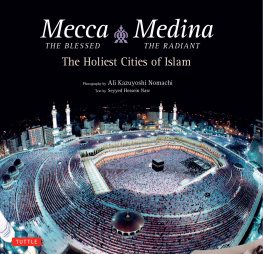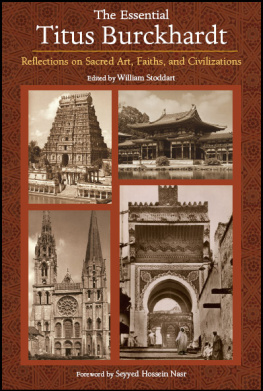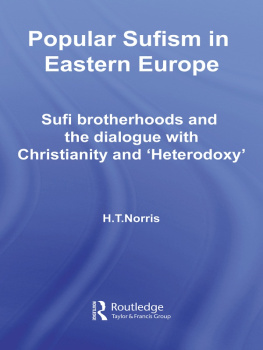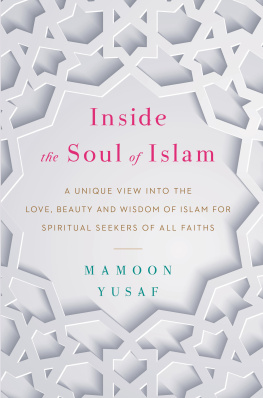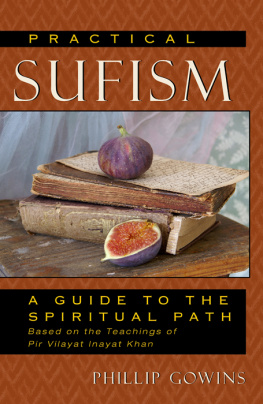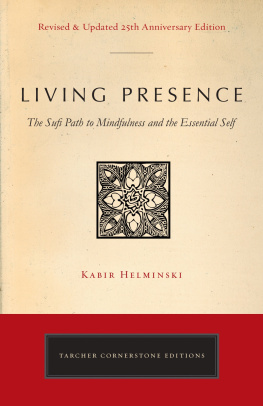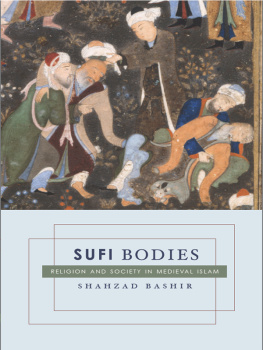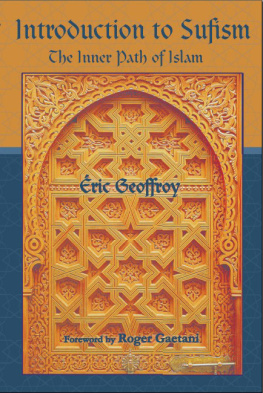About This Book
This elegant and well-chosen anthology of Sufi texts is not only a delight to read, but provides one of the most accessible and useful general introductions to Sufi metaphysics available in English. The emphasis on the mystical fruitfulness of the Qurnic texts is especially welcome.
Timothy J. Winter, Cambridge Muslim College, co-author of Understanding Islam and the Muslims
This work brings together some of the most profound and transformative words of wisdom that unveil the mystical heart of the Islamic faith, referred to as Sufism. Given the media coverage of Islam, it is not surprising that many people, all over the world, are wondering how it is that well over one billion Muslims can believe in and practice the religion of Islam: this book will provide a wonderfully clear and spiritually compelling answer.
Reza Shah-Kazemi, Managing Editor, Encyclopaedia Islamica, author of Paths to Transcendence and The Other in the Light of the One
Drawing on over one hundred different sources and classical texts, Peter Samsel has assembled a superb collection of Sufi sayings, anecdotes, aphorisms and poems, adth and Qurnic citations concerning divine Unity, and the contemplative discipline of invocation of God (dhikr) in Sufism. The authors own extremely original and insightful analysis of the doctrine of Unity in Sufism reveals the ecumenism at the heart of exoteric Muslim fideism.
Leonard Lewisohn, University of Exeter, editor of The Philosophy of Ecstasy
This remarkably wide-ranging volume can be read in two very different, yet complementary ways. First of all, Dr. Samsel has provided an inspiring and thought-provoking collection of spiritual wisdom and insights drawn from the Qurn, adth, and more than a hundred classical Sufi authors and teachers, together representing all the major genres of Islamic spiritual writing. Readers from every background will discover some familiar voices, such as Rms poetry, alongside equally intriguing passages from figures who are less well known today, together offering a richly elaborate bedside treasury of meditations and guides to spiritual practice. At the same time, for more systematic readers, these beautiful (and bountiful) selected passages are presented here within a carefully elaborated metaphysical and philosophical framework that together may well provide the most intelligible, widely accessible, and persuasively articulated introduction to the classical Islamic theological tradition available today.
James W. Morris, Boston College, author of The Reflective Heart
World Wisdom The Library of Perennial Philosophy
The Library of Perennial Philosophy is dedicated to the exposition of the timeless Truth underlying the diverse religions. This Truth, often referred to as the Sophia Perennisor Perennial Wisdomfinds its expression in the revealed Scriptures as well as the writings of the great sages and the artistic creations of the traditional worlds.
A Treasury of Sufi Wisdom appears as one of our selections in the Treasures of the Worlds Religions series.
Treasures of the Worlds Religions Series
This series of anthologies presents scriptures and the writings of the great spiritual authorities of the past on fundamental themes. Some titles are devoted to a single spiritual tradition, while others have a unifying topic that touches upon traditions from both the East and West, such as prayer and virtue. Some titles have a companion volume within the Perennial Philosophy series.
A Treasury of Sufi Wisdom: The Path of Unity
2015 World Wisdom, Inc.
All rights reserved.
No part of this book may be used or reproduced in any manner without written permission, except in critical articles and reviews.
Library of Congress Cataloging-in-Publication Data
A treasury of Sufi wisdom : the path of unity / foreword by Seyyed Hossein Nasr ; edited by Peter Samsel.
pages cm. -- (The library of perennial philosophy)
Includes bibliographical references and index.
ISBN 978-1-936597-46-8 (alk. paper)
1. Sufism. 2. Sufis. I. Nasr, Seyyed Hossein. II. Samsel, Peter.
BP189.T67 2015
297.4--dc23
2015023674
Printed on acid-free paper in the United States of America.
For information address World Wisdom, Inc.
P.O. Box 2682, Bloomington, Indiana 47402-2682
www.worldwisdom.com
For Gail,
beloved companion on the path.
List of Figures
I. The Path of Unity:
The Twofold Movement of the Stages of Return
II. Affirmation of Unity:
The Manifold Aspects of the Shahdah
III. Discernment of Unity:
The Manifold Aspects of Tawd
IV. Concentration upon Unity:
The Manifold Aspects of Dhikrullh
V. Realization of Unity:
The Manifold Aspects of Fan-Baq
Foreword
The doctrine of Unity (tawd) is the central doctrine of Islam just as the attainment of Unity stands as the ultimate goal of all Islamic practice. This is especially the case in Islamic spirituality and esoterism, which have been crystallized over the centuries largely in Sufism, whose central spiritual method is the dhikrthe invocation and remembrance of God. The central testimony (Shahdah) of Islam, that there is no god but God (l ilha illa Llh), is the doctrinal foundation of Unity. In turn, the invocation of the Shahdah, along with that of the Divine Name that it contains, is the fundamental means of remembering God and attaining Unity. God is One, the only One, and that Reality requires, most immediately, integration on the human plane and ultimately the realization that the One alone is and we are not, our selfhood having passed away or become annihilated (fan), and that finally He is the Self of our selves, that our true self subsists in Him (baq).
In this exceptionally succinct and lucid work, Peter Samsel deals in six chapters, which follow each other with an inner logic, with the theme of unity from both a doctrinal and a methodological perspective, but always in an essential and principial manner. Following an overview in the opening chapter, he deals in a most wide-ranging manner in the second and third chapters with the doctrine of Unity and in the fourth and fifth chapters with the method to attain unity and with its realization. The final chapter draws all of these aspects of Unity together in an integral vision. So, the work is at once a doctrinal and practical guide to what lies at the heart of Sufism. Needless to say, however, the actual practice of the method requires a qualified guide. No matter how good a written guide may be for climbing high mountain peaks, the actual climbing requires a seasoned guide without whom one could experience an irreparable fall.
One of the outstanding features of this book is that it is replete with quotations from Sufi masters ranging from the earliest period to recent times. One could in fact say that the work is a very well chosen anthology of Sufi aphorisms, sayings, poetry, and teachings containing many pearls of the vast literature of Sufism. The selection of the Sufi quotations reveals the extensive knowledge Peter Samsel has of Sufi literature as well as his mastery of Sufi doctrine and intimate familiarity with Sufi practice.
In a world in which there are so many distorted or truncated expositions of Sufism, it is important to point out the authentic presentation of this book, rooted as it is in the Sufi tradition and the traditional worldview. This work thus serves as a sure guide for the understanding of authentic Sufi doctrine and the principles of the method of reaching the Truth which the doctrine explains and to whose realization it points. Like all authentic Sufi works, it provides a map, often in the words of great masters, of the path to the Truth and instructions concerning how to follow the path. It challenges the reader to ask himself or herself who he or she is, what is the meaning of being human, and where he or she is going and should be going. Its aim is both propaedeutic and therapeutic. Let us hope that it will cause the perceptive reader to realize why we are here and where we should be going in this transient and fleeting life, thus becoming a true seeker. And let us not forget that as Christ said, Seek and ye shall find.


